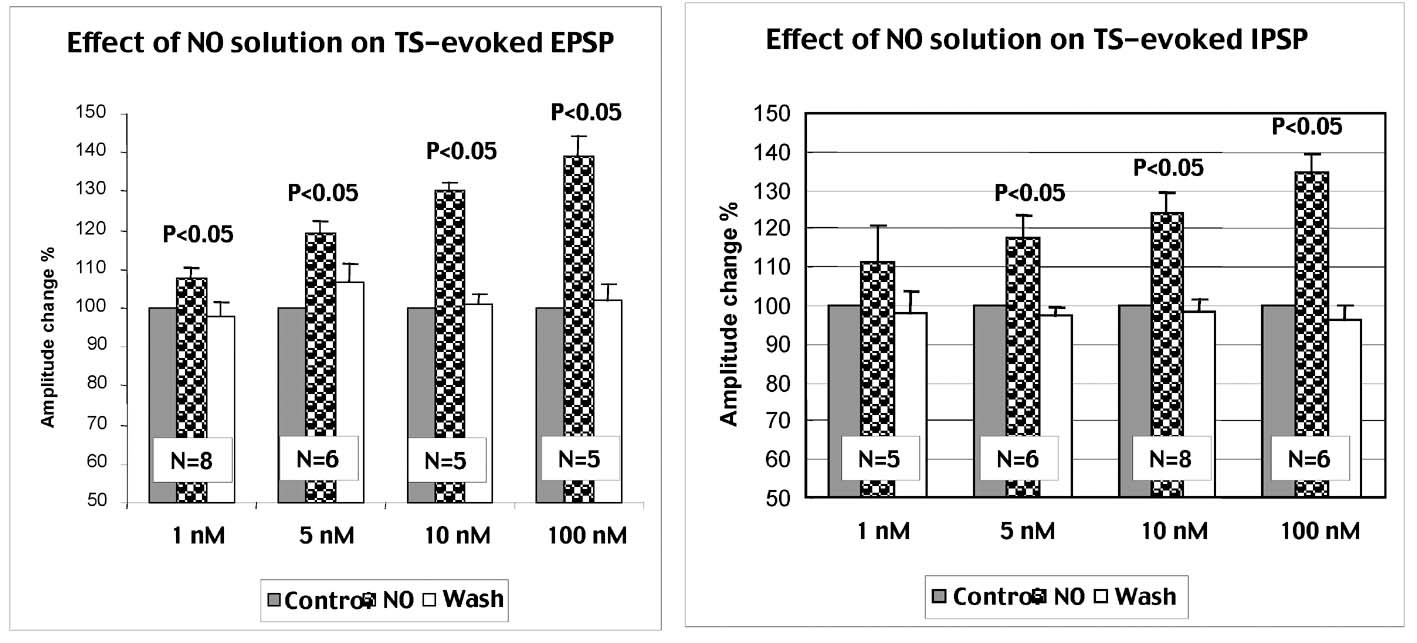We reported previously that an NO-GABA pathway is involved in the depression of the cardiac baroreflex induced by ANGII within the NTS (Paton et al. 2001; Kasparov & Paton, 1999). However, the cellular mechanisms of NO action on inhibitory and excitatory synaptic transmission in NTS have not been elucidated. In this study we tested whether excitatory and inhibitory postsynaptic potentials (EPSP and IPSP, respectively) are differentially sensitive to NO.
Whole-cell patch clamp recordings were performed from NTS neurones in acutely prepared brainstem slices of humanely killed 14 day old rats as described in (Kasparov & Paton, 1999). IPSP and EPSP were evoked by electrical stimulation within solitari tract (TS). To assess the sensitivity of evoked IPSP and EPSP to NO, a wide range of concentrations of NO aqueous solutions or an NO donor (diethylamine NONOate -DEA/NO) were bath applied. All data are presented as mean ± S.E.M.
NO aqueous solution reversibly increased the amplitude of TS-evoked EPSP and IPSP in a concentration-dependent manner. The threshold concentration was 1 nM for the EPSP and for 5 nM for the IPSP (see graphs). 100 nM (DEA/NO) reversibly increased the amplitude of TS-evoked EPSP by 20 ± 4 %( n = 11, P < 0.05 using paired t test) and of TS-evoked IPSP by 15 ± 3 %( n = 8, P < 0.05). Integral areas of evoked EPSP and IPSP were similarly increased (41 ± 7 %, n = 11, P < 0.05; 37 ± 7 %, n = 8, P < 0.05 respectively). In contrast, lower concentrations of DEA/NO (50 and 10 nM) were without effect on evoked EPSP and IPSP. Both NO and DEA/NO could affect EPSP and IPSP without any measurable changes in input resistance or resting membrane potential.
In conclusion, our results suggest that NO potentiates both TS-evoked EPSP and IPSP in the NTS. Further experiments will clarify whether the potentiation of evoked IPSP results from a direct action of NO on GABAergic neurones or is secondary to the increased efficacy on excitatory transmission in this nucleus.
S. Wang is a recipient of an ORS award. SK and JFRP are supported by British Heart Foundation.

